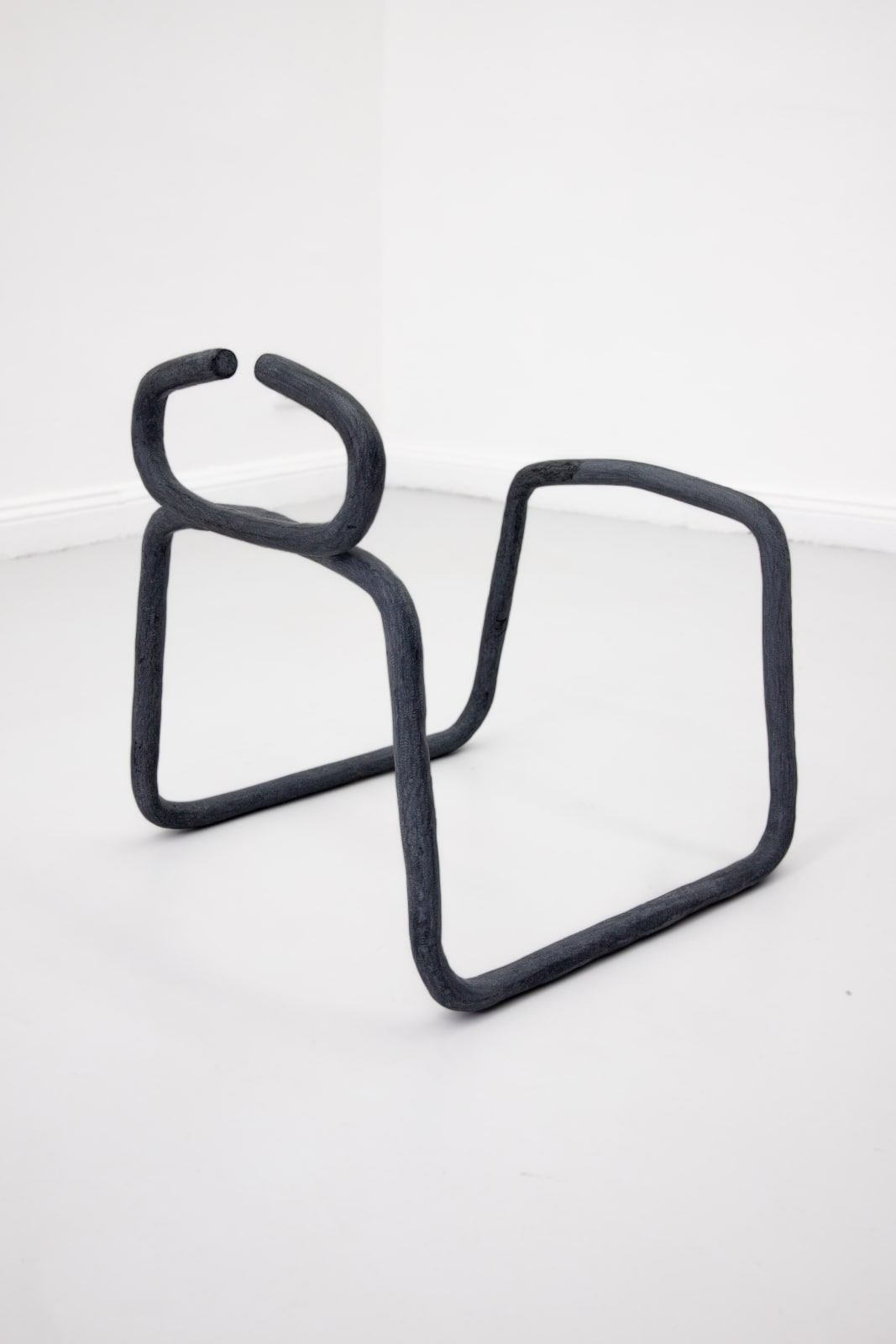ART BASEL STATEMENTS 2023 | Booth M6: Gordon Hall
Gordon Hall’s sculptures and performances bristle with a dual sense of familiarity and unrecognizability. Hall’s sculptural works recreate and “unmake” objects that typically recede into the background, recasting commonplace yet peripheral things in ways that compel those who witness them to consider the poetics of everyday objects: how they affect us emotionally, socially, and physically. The installation of the works calls attention to their performative capacity, how motionless things might nonetheless possess a choreographic language. Often low, floor-skimming constellations, they draw the eye towards places that might otherwise be ignored or overlooked—and the resistance these spaces might offer in return.
The works presented in Art Basel 2023 elicit a sense of closeness, evoking items entangled with everyday actions, needs, and desires—and putting them to new use. They move beyond the so-called “universal” discourses of minimalism and abstraction to foster a relational mode of looking that is intimate and variable, which gestures towards the inward aspects of the quotidian: to the many lives lived with and through objects. The presentation articulates a queer poetics of being with, enabling a mode of viewership closer to witnessing: a space which invites us to look at things that resist fully revealing themselves to us. In the world of Hall’s practice, legibility is not the prerequisite for meeting; the sculptures ask us to consider how we encounter bodies that are difficult to identify, classify, or recognize. The artist invites us into a politics of engagement with bodies that defy normative categorization, situating objects as offering experiences of care without transparency.
Drawing inspiration from forms like furniture and clothing, Hall’s presentation with Hua International conjures, emulates, and longs for bodies but does not depict them. Their sculptures—which include altered recreations of a table leg, a step stool, a bench for trying on shoes, and a belt—recall things that have once carried our weight, pressed clothing against our bodies, or brushed against our skin. “Rather than draw these objects that draw him,” artist and theorist Jill Casid writes, “Hall re-makes them—often then painstakingly drawing—sometimes in pencil, sometimes pen—on their surfaces. Even and perhaps especially on the sides not readily apparent without shifting our orientation in space which is also to say our orientation in the social.”
Hall brings the space of production into the space of presentation with the inclusion of
March, 4 pm (Four Fold), a video projection depicting a ray of light that moves, almost imperceptibly, across his studio floor in late afternoon in spring. Translating this ephemeral, atmospheric occurrence between disparate spaces not only gestures towards the fluctuations and transformations of the creative process that occur between the studio and spaces of display, but it also extends the artist’s creation of subtle surfaces that request slow forms of attention.This sense of slowness continues in Hall’s performance Stand Me Down, which will put two of Hall’s Saddle Benches to use at random intervals during the fair’s operating hours. In this work, the simple act of sitting gradually evolves into a hermetic erotics of waiting. Folded over into themselves, these dancers show themselves to us indirectly, echoing the introversion of Hall’s sculptures: they tap you on the proverbial shoulder, come in through the back door, and lurk in the corner of your eye, just outside your immediate field of vision.







